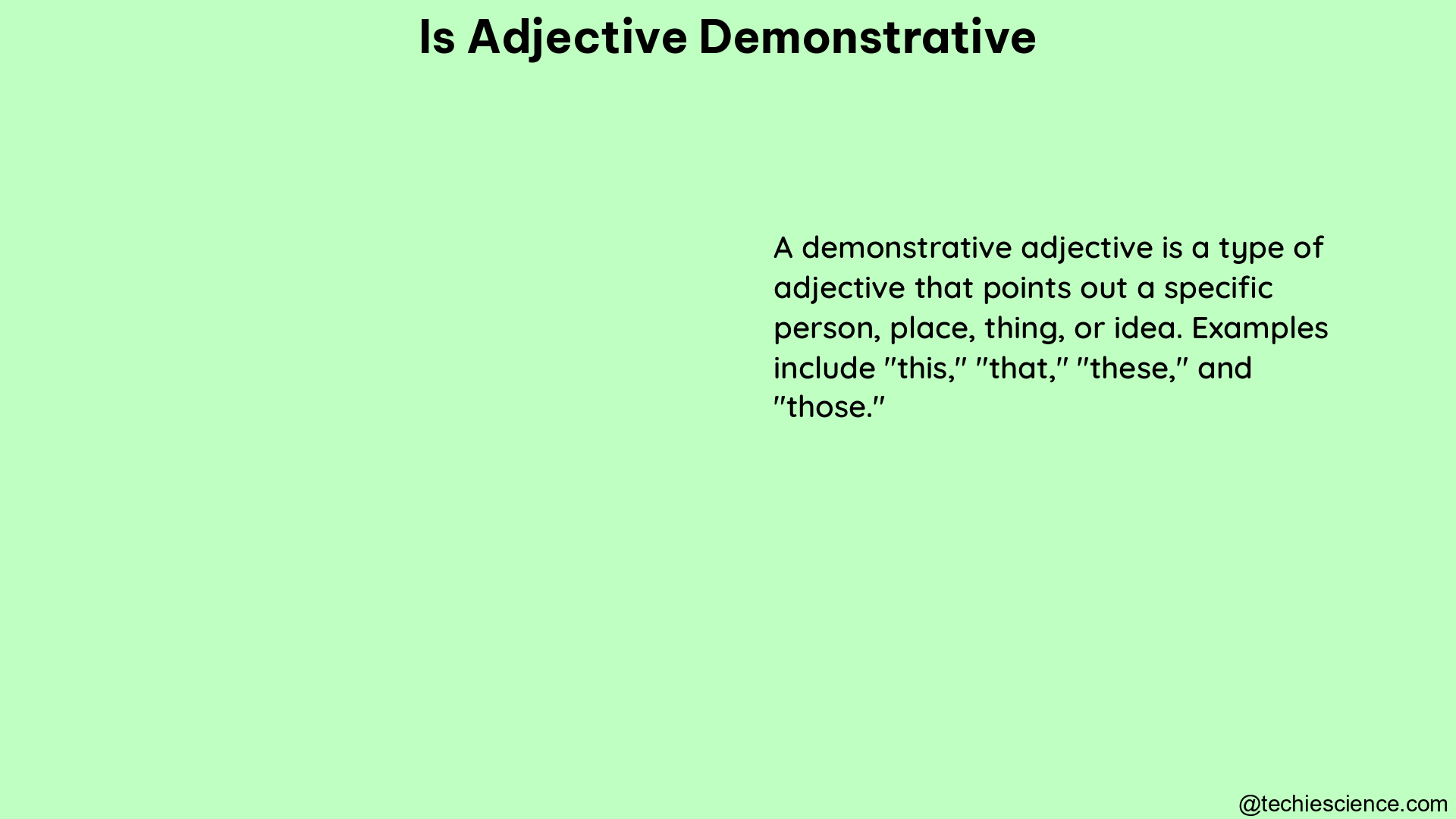Demonstrative adjectives are a crucial part of the English language, used to specify the location or proximity of a noun or pronoun. These adjectives, such as “this,” “that,” “these,” and “those,” play a vital role in clear and precise communication. In this comprehensive guide, we will delve into the intricacies of demonstrative adjectives, exploring their key features, advanced details, and best practices for their usage.
What are Demonstrative Adjectives?
Demonstrative adjectives are a type of adjective that are used to indicate the position or location of a noun or pronoun in relation to the speaker or writer. They are used to point out or “demonstrate” the specific object or person being referenced. The most commonly used demonstrative adjectives are “this,” “that,” “these,” and “those.”
Key Features of Demonstrative Adjectives

1. Physical Location
Demonstrative adjectives describe the physical location of something relative to the speaker or writer. “This” and “these” refer to objects or people that are closer, while “that” and “those” refer to objects or people that are further away. Additionally, “this” and “that” are used to modify singular nouns, while “these” and “those” are used to modify plural nouns.
2. Time Reference
Demonstrative adjectives can also be used to refer to moments in time. “This” and “these” are used to indicate current, recent, or closely upcoming moments, while “that” and “those” are used to refer to moments that occurred or will occur further away from the present.
3. Distinction from Demonstrative Pronouns
It’s important to note the distinction between demonstrative adjectives and demonstrative pronouns. Demonstrative adjectives are used to modify nouns or pronouns, while demonstrative pronouns function as the subject or object of a sentence, replacing the noun entirely.
Examples of Demonstrative Adjectives
Here are some examples of demonstrative adjectives in use:
- This cake is amazing.
- That shirt looks like it would fit me.
- These plants are thriving.
- Those plants, in the shade, are dying.
Advanced Details and Theoretical Explanation
Demonstrative Determiners
Some linguistic sources consider demonstrative adjectives to be a type of determiner, a class of words used to express the relationship between a noun or pronoun and other parts of the sentence.
Superlative and Comparative Forms
Unlike most other adjectives, demonstrative adjectives cannot form superlative or comparative forms. There are no “more this” or “most that” constructions.
Usage in Different Contexts
Demonstrative adjectives can indicate distance in a variety of contexts, not just physical distance. They can also be used to express distance in time, as well as more abstract or nonliteral forms of distance.
Best Practices and Rules for Using Demonstrative Adjectives
1. Use Demonstrative Adjectives Before Nouns
Demonstrative adjectives must always be placed before the nouns they modify. They cannot be used alone without a noun.
2. Match Demonstrative Adjectives with Nouns in Number
Ensure that the demonstrative adjective matches the noun it modifies in number, whether singular or plural. “This book” and “these books” are correct, while “this books” or “these book” would be incorrect.
Conclusion
Demonstrative adjectives are a fundamental part of the English language, allowing speakers and writers to precisely indicate the location and proximity of nouns and pronouns. By understanding the key features, advanced details, and best practices for using demonstrative adjectives, you can elevate your communication skills and ensure your messages are clear and unambiguous.
References
- https://www.thesaurus.com/e/grammar/demonstrative-adjectives/
- https://quillbot.com/blog/adjectives/demonstrative-adjectives/
- https://byjus.com/english/demonstrative-adjectives/
- https://www.yourdictionary.com/articles/demonstrative-adjectives
- https://www.grammar-monster.com/glossary/demonstrative_adjective.htm
Hi… I am Sowndharya Jagadeeswaran, a university rank holder in M.A. English Literature. I have also done my master’s in Business Administration. Inquisitive as I am, my interest in action-oriented research helped me publish research papers in reputed journals. Now, as a career, I am an instructor where I teach young and adorable students the intricate technicalities of Public Speaking and Creative Writing. I also enjoy writing articles on topics I specialize and research in.
You can connect with me through LinkedIn.-